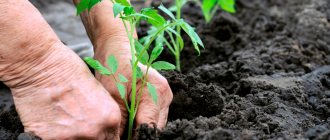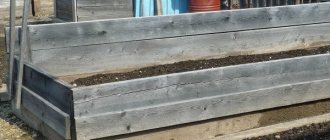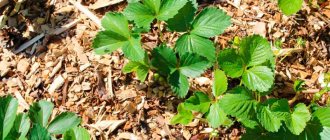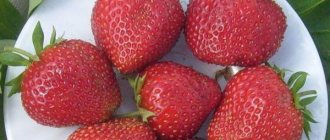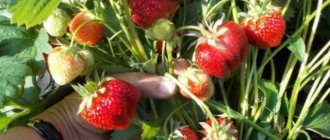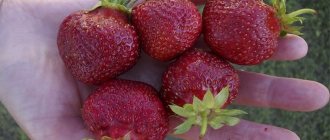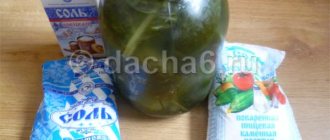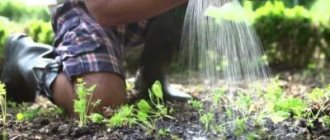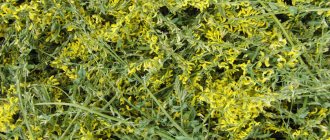Is it possible to protect strawberries from weeds?
Weeds in strawberry beds are a common occurrence. There are three ways to cope with this problem: mulching the soil, weeding, and treating with herbicide solutions.
In households, it is customary to fight weeds with the help of an ordinary hoe. Weeding helps get rid of weeds only for a few days. A longer period of protection provides soil mulching for strawberries. True, over a large area this method is too expensive, and it also requires drip irrigation systems.
It is much easier to treat strawberries with a herbicide solution. Various herbicides are produced with contact or systemic, continuous or selective action. All these chemicals can protect strawberry beds for the entire growing season. True, each type of herbicide has its own rules of application.
Considering the fact that strawberries are a perennial crop that grows in the same place for several years, it is better to use systemic selective herbicides to treat and protect against weeds.
Such preparations are sold in the form of a powder or a concentrated emulsion or suspension, and before use they must be diluted with water.
Newly emerging weeds are sprayed with a herbicidal solution in early spring, before strawberries bloom, or the plantings are treated in the fall, after harvesting. If the beds are heavily clogged with various grasses that take away nutrients and water from the strawberries, then treatment with a selective herbicide can be carried out in the summer.
Pre-treatment of the area
To prevent your berry crop from being attacked by weeds, it is necessary to process the land in a timely manner. For effective, and most importantly - correct, cleaning, it is necessary to use the following herbicides for strawberries:
- in spring or autumn, against germinating weeds, it is necessary to apply Trifluralin. The proportion is 480 grams per 1 liter of water. For 1 square meter you will need 2.5 ml;
- chemicals with Glyphosate - you need to apply 2 treatments if the weeds are actively developing. The procedure will help you forget about weeding for several years;
- Betanal (3 ml per 1 square meter) + Venzar (0.4 ml per 1 square meter) - you need to treat with this solution once if the weeds are in the cotyledon stage;
- Galtix (4 grams per 1 square meter) + Betanal (3 ml per 1 square meter) is the only treatment against weeds that are in the cotyledon phase;
- Galtix (2 grams per 1 square meter) + Betanal (3 ml per 1 square meter) - this solution needs to be treated twice if the weeds are in the cotyledon stage.
Some experienced gardeners claim that just 5 grams of a strawberry herbicide like Astera is enough and your plot of land will be clean and suitable for growing.
To get maximum results, you need to properly handle fresh weeds. This must be done in damp soil. If the weather is dry, then before treating strawberries with herbicides, it is necessary to moisten the land. If you use one of the proposed options correctly, you can destroy the weeds on your site and forget about them for a long time.
Review of herbicides for strawberries
Throughout the growing season, strawberries have many enemies. Weeds take away nutrients and water, collect dew on leaves and promote the development of fungal infections. Insects eat leaves and berries. Fungi affect foliage, roots and lead to the appearance of mold and rot on the fruit.
See also
Types of garden tools for removing weeds and how to make tools with your own handsRead
All these problems can be combated with the help of chemicals: fungicides (for fungi), insecticides (for insects) and herbicides (for weeds).
Tiovit Jet
It is a sulfur-based fungicidal powder that protects strawberries from powdery mildew and other fungal diseases. The drug is used as a remedy against ticks. In addition, sulfur itself is one of the components necessary for the normal growth of strawberries.
The powder is dissolved in water, after which the strawberry leaves, dry from dew, are treated with the working solution. The released sulfur disrupts the life processes of pathogenic cells. True, the drug only lasts 1-2 weeks. Rainfall washes the sulfur off the leaves. This drug does not affect weeds.
Nuclear mixture
This is a mixture of various drugs that can be bought at any pharmacy. All substances are dissolved in water, and the prepared solution is sprayed on strawberry beds before or after flowering. The nuclear mixture helps protect strawberries from fungal diseases and insects (weevils, ants, aphids). True, this remedy does not work on weeds.
Recipe for preparing the mixture:
- 40 liters of water;
- 80 milliliters (1 bottle) birch tar;
- 25 milliliters of iodine (1 bottle);
- 10 grams of boric acid (1 sachet);
- 40 milliliters of 10 percent ammonia solution (1 bottle);
- 30 milliliters of fir oil (1 bottle).
A glass of the resulting mixture is diluted in a bucket of water and sprayed on the strawberry beds. This solution can be used to treat the entire vegetable garden. A nuclear or hellish mixture will improve the quality of fruits and increase the yield of all crops.
Other means
Weeds on strawberries need to be controlled with herbicides. Lontrel 300 will protect against wheatgrass, knotweed, sow thistle, dandelion, chamomile, and plantain. You can get rid of annual and perennial weeds using the herbicides Goltix and Betanal. Strawberry beds are sprayed with these substances at the very beginning of weed growth.
Trifluralin is used a month before planting seedlings. Tornado, Roundup, Glyphosate are used during the period of active growth of weeds. Young strawberry plantings can be treated with the herbicides Daktal, Phenmedifan, Desmedifam. In summer, PAB and Prism will help get rid of weeds.
See also
How to fight a weed called American, the best methods and preventive measuresRead
What is a herbicide and its benefits
Herbicides are special substances that allow you to destroy all weeds within 2 weeks. The undoubted advantage of such funds is their low cost and efficiency.
The use of herbicides allows you to achieve the following results:
- eliminate several hundred species of weeds;
- improve plant development and increase yield parameters;
- prevent the development of strawberry diseases.
Which one is better to choose?
Herbicides are chemicals that are used to get rid of unwanted vegetation, that is, weeds. Before planting strawberries, you can use the following products: Goltix, Betanal, Venzar, Glyphosate, Trifluralin. Newly planted seedlings can be treated with Dactal, Phenmedipham, Fluazifop-P-butyl.
In summer, the following herbicides can be used to protect strawberry beds: PAB, Prism, Lontrel 300, Select, Fusilad. The preparations Sinbar and Devrinol are suitable for autumn treatment. After removing the strawberry leaves, Lenacil is used.
List of drugs based on clopiralide
Many agricultural companies package this herbicide and sell it under different trade names:
- Clorite;
- Lorgnette;
- Gazontrel;
- Longan;
- Bis-300;
- Lonner-Euro;
- Clippard;
- Choice-300;
- Hacker;
- Premier-300;
- Tatrel-300;
- Lontrel-300.
Registration of some drugs expires in 2021 – 2020.
How to Apply Herbicides
Selective herbicides can be used in early spring, before strawberries bloom, in summer, during the period of active weed growth, or in autumn, after picking berries. There are a number of chemicals that are best applied to the soil before planting strawberry seedlings.
Typically, one type of herbicide is used for treatment. The chemical is dissolved in water according to the instructions, after which fresh weeds are irrigated with the working solution. It is advisable to spray the weeds with water before treatment or use a herbicide immediately after rain.
During one growing season, 1-2 treatments with herbicides are done.
Weeds die in 1-3 weeks, and the protective effect of the herbicide lasts throughout the summer.
Processing in the first month
Experienced gardeners draw your attention to the fact that weeds actively develop in the first weeks after planting strawberries on a plot in spring or autumn.
Daktal is an effective assistant in weed control. It must be applied immediately after planting strawberries. It is designed to eliminate weeds, usually cereals.
To completely destroy such weeds, you need to use a complex product that you can prepare yourself. To do this you need to mix the following components:
- Fendimifan - 21 grams per 1000 ml of water;
- Desmedipham - 71 grams per 1000 ml of water;
- Etofumesate - 112 grams per 1000 ml of water.
Mix all the components thoroughly and obtain an effective mixture against grass weeds. For 1 square meter you will need 1.5 ml of this solution.
What materials are suitable for mulching strawberries?
To mulch strawberry beds, two types of covering materials are used: plastic film and non-woven material.
Special polyethylene film can be:
Two-color films are very popular in the horticultural environment because the light (silver, yellow, white) color of the top layer prevents overheating of the soil, creating favorable conditions for earthworms and the root system of strawberries. In addition, the light background of the top coating of the film reflects the light falling on the plants, preventing the occurrence of burns. The inner – black – layer of the film prevents the development of weeds.
Non-woven material comes in a wide variety of types. To mulch strawberries, Russian gardeners use:
Lutrasil is a high-quality, durable and unusually lightweight covering material developed by German scientists and superior to polyethylene film in all respects. One layer of this soft and smooth spun fabric can protect plantings from frost on the soil down to -2 degrees. Its double layer can withstand temperatures of -7 degrees.
Lutrasil is available in two versions: in the form of a spun fabric (fabric) intended for covering greenhouses, greenhouses, beds, and non-woven black lutrasil for mulching the soil. As the experience of Russian gardeners has shown, the use of both versions of lutrasil when growing strawberries gives very good results.
Spunbel, spunbond, agrospan are non-woven materials produced from polypropylene threads by thermal bonding on a special machine - a calender. Unpainted white canvases are designed to cover plants during spring frosts. Black canvases, obtained by introducing special dyes into the molten polymer, are used as a material for mulching the soil. Canvases are used for different purposes. The use of spunbond in the country is especially popular.
In order to increase the resistance of polypropylene to the harmful effects of sunlight, special ultraviolet stabilizers are introduced into the polymer melt. In this way, durable materials are achieved.
In general, the service life of spunbel and spunbond mulch materials is three to four years: it is during this period that the strawberry plantation bears fruit most effectively.
When transplanting plants to a new location, the mulch covering is also completely replaced. Agrospan non-woven material is a higher quality material and can withstand a longer service life. Also read about greenhouse material. The link describes covering material for cucumbers.
Covering material for strawberries: why is it needed?
Purchasing covering material is the easiest way, relieving gardeners of all the problems associated with caring for strawberries.
- The use of black mulch film or black agrofibre, which does not transmit sunlight, prevents the growth of weeds. There is no need for constant weeding.
- Covering materials create a favorable microclimate that prevents weathering and drying out of the soil. The soil underneath always remains loose and moist, so a considerable number of earthworms gather in these places, additionally fertilizing and loosening the soil. The soil on strawberry beds, mulched in this way, no longer needs to be loosened.
- Strawberries growing in mulched beds form a larger number of adventitious roots, which makes them much stronger.
- The problem of removing excess whiskers is greatly simplified: on the surface of the inorganic mulch material there is nothing for them to attach to. The gardener just needs to pick up scissors and remove unnecessary shoots.
- Black spunbond promotes accelerated ripening of berries. Thanks to him, the berries remain clean even during periods of prolonged rain. Lack of contact with the ground prevents the development of rot, which reduces losses and increases yield. There is evidence that ripened berries can be preserved on non-woven material for two weeks (unless, of course, they are pecked by birds).
- Strawberry leaves that are not in contact with the soil are protected from pests and diseases that spread in this environment.
- In winter (especially in snowless winters), inorganic mulch prevents plants from freezing.
- Mulching materials help warm both the soil and strawberry roots. Having absorbed heat, they retain it in the ground for a long time. This is most relevant during the spring period of fluctuations in day and night temperatures.
- The use of inorganic covering material has a number of advantages over the use of organic mulch, which quickly decomposes, becoming a nutrient substrate for the proliferation of fungi and harmful microorganisms.
- The use of covering materials that create conditions of high soil moisture can contribute to an increase in the slug population: this is the only drawback of their use in an area where there are already a lot of slugs. Some gardeners note that garden ants also liked covering materials, but their presence does not particularly affect the yield of strawberries.
The photo shows strawberries planted in covering material:
Weed killers in summer
- Poast together with PAB or Prism - most often used against perennial and annual cereals. The second option is Select and Fusilade;
- against annual dicotyledonous weeds, herbicides containing clopyralid, which penetrate the plants through the leaves, are preferable. The solution is prepared at the rate of 300 g per liter of water; half a liter of solution is required per hectare;
- Lontrel 300-D is used against dandelion, sorrel, chamomile, buckwheat, plantain, sow thistle and knotweed. The solution is made from five milliliters of product and a liter of water. For one hundred square meters you need five liters of such a solution;
- in the first autumn after planting, control over winter weeds can be enhanced with the help of Sinbar or Devrinol. But it should be borne in mind that Sinbar is also unsafe for strawberries - weak plants may die. Before use, you should make sure that the cultivated variety tolerates this drug well. Devrinol is very effective against cereals (when mulched with straw) and spring annuals. If two treatments are necessary, you need to ensure that the total dose of drugs does not exceed the allowable dose for one season.
To avoid damaging strawberries, you should never apply Sinbar treatment at the same time as treating them against grains. First, it is necessary to apply drugs against cereals and only after six weeks - Sinbar.
Sinbar and Devrinol affect weeds through the soil, so it is better to apply them after rain. In dry weather, irrigation is necessary after treatment. Weak plants die after two to three days, the strongest ones die after two weeks.
You should not think that when processing strawberry plantings, the need for weeding and loosening is completely eliminated.
Means for increasing strawberry yield
Ammonia for strawberries
Agronomists also recommend the use of Epin for strawberries. It is not a fungicide or herbicide, but it increases the crop's immunity to diseases and pests. Consumption: 1 ampoule per 5 liters of water. It is usually used for spraying young plants, but can also be used to treat seeds.
Another popular growth regulator is Immunocytophyte; it is also widely used for strawberries. It is released in tablets. Consumption rate: 1 tablet per 1 tablespoon of water. In order for it to dissolve, it must be thoroughly mixed for half an hour, then further diluted with water in a volume corresponding to the type of treatment of the plant.
Another popular growth regulator is Immunocytophyte
Succinic acid can be used as a growth biostimulant for strawberries. Its aqueous solution is used - 0.01%, that is, 1 g per 5-10 liters of water. For the same purposes, the use of sodium monophosphate is recommended.
Selective herbicide for raspberries
Raspberries are a crop that not only tastes great, but also contains many beneficial substances. The plant is a subshrub with a two-year development cycle of the above-ground part. Weeds can significantly reduce the volume and quality of the harvest, and sometimes even destroy the plant
That is why it is important to pay enough attention to the timely implementation of complex agrotechnical measures, including the treatment of plantings with herbicides
Types of weeds
Among the weeds common in gardens and orchards, including raspberry plantings, are spurge, sunflower, pickleweed, odorless chamomile and other taproot plants. Perennial weeds, which have increased competitiveness with the newly planted crop, pose a particular danger to subshrubs. Another problem is the growth that forms around the bush in large quantities. This is the same raspberry, but it only grows on its own from root shoots throughout the entire period of the plant’s life. For a crop, shoots are a weed that takes up to 50% of nutrients and significantly reduces the quality and quantity of the crop.
Timely removal of shoots and other weeds will provide the raspberry bushes with good lighting and increased access to oxygen. This means that the berries will begin to grow not only at the top, but also at the bottom of the bush, and the likelihood of the plant being attacked by diseases and insects will decrease.
Weed control in raspberry plantations
Before planting raspberries, it is necessary to thoroughly till the soil using continuous action herbicides. In this way it is possible to get rid of perennial weeds. As the bushes grow, the soil between the rows is cultivated with a cultivator. This allows not only to maintain its optimal structure and air conditions, but also to eliminate weeds. The same applies to mulching the soil with manure, sawdust or straw. If such treatment is carried out in the spring immediately after the snow has melted, this will increase the fertility of the soil, preserve it from moisture evaporation and create an optimal temperature regime to prevent the growth of weeds.
Treatment of raspberries with selective herbicides is becoming increasingly popular. Their use allows for more dense planting of crops, increasing the volume of the harvest or saving area. Selective herbicides do not need to be used throughout the entire area. It is enough to process only the rows, and carry out mechanical or manual weeding between the rows.
The effectiveness of herbicides on raspberry plantings depends on a number of factors: the mechanical composition of the soil, humus content, humidity, species composition of weeds, their quantity, as well as weather conditions
It is important to strictly adhere to the dosage, because
some drugs can slow down the development of culture.
Do I need to use covering material for strawberries?
Strawberries, a source of delicious berries, are the favorite crop of most Russian amateur gardeners. However, caring for her is not at all easy:
- During the summer, she continuously grows a mustache, which must be constantly removed.
- In three years, her plantations are overgrown with many weeds.
- The berries, often lying directly on the ground, become very dirty and rot. This significantly reduces the yield and deteriorates the presentation.
Read also: Ural beauty currant: description and characteristics, advantages and disadvantages of the variety
The use of modern covering materials solves the problem of “garden slavery” in caring for this crop.
Results
Every summer resident wonders how to protect varietal strawberries from weeds. Only a set of measures and their timely implementation will help reduce the amount of weeds several times, and often get rid of them forever.
Related Posts
- Vinegar and salt based weed killer
- Excellent against weeds in garden beds
- How to get rid of purslane
- How to get rid of the weed Pigweed
- How to clean an overgrown garden plot
- Annual and perennial cereal weeds
- The width is thrown back: description and control measures
- How to get rid of thistle
SOIL TILLAGE AND WEED CONTROL
On raspberry plantations, soil cultivation is systematically carried out. This is caused by the need to control weeds, apply fertilizers and create a favorable water-air regime for plants.
The main way to maintain soil between rows is black fallow. It is maintained by systematically cultivating the soil with tine cultivators, disc harrows or cutters.
Manual loosening of the soil is used only in rows in the first two years after planting, later they are replaced by the use of herbicides.
Sometimes in the first years of a plantation’s existence, the inter-row spaces are occupied by vegetable and fodder crops. However, this complicates the care of raspberry plantations and can only be recommended in cases of urgent economic need.
A more appropriate agricultural practice should be considered sowing young plantations of green manure crops between rows, especially if the pre-planting filling of the soil with fertilizers was insufficient. Green manure significantly replenishes the supply of organic matter in the soil, improves its structure, which has a beneficial effect on the development of the machine.
In different soil and climatic zones, various crops that produce high yields of green mass are used as green manure.
Weed damage
American grass is characterized by rapid development, and therefore this grass can suppress the growth of other crops grown on the site within a season. This circumstance carries another danger: due to its active growth, the weed creates a shadow, interfering with the growth of neighboring plants. As a result, crops receive insufficient light and moisture and dry out over time.
The second danger of the American woman lies in the fact that the weed is capable of transmitting infectious diseases. This grass is chosen as a place for development by many insects that harm the development of garden crops. In addition, the American plant is capable of cross-pollinating with other plants (mainly grains and cruciferous plants), worsening the varietal qualities of the latter.
Due to the growth of this weed on the site, gardeners lose up to 25-50% of the harvest. However, the American also has a number of positive qualities. The herb contains several useful microelements that are used in the treatment of respiratory diseases and gastrointestinal pathologies, diabetes mellitus, and dropsy.

